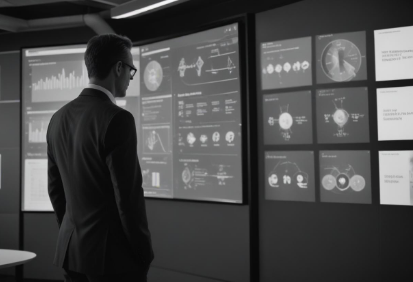FPX methodology methods have changed over time. They started from old ways of running projects. Now, they take good ideas from many different fields to make a complete system. FPX is good at planning and getting things done. That’s why many people like to use it for big, complicated projects.
The FPX methodology is a structured approach to managing projects. It focuses on planning, execution, and continuous improvement to ensure successful project outcomes. Project managers use this method to keep projects on track, within budget, and meeting quality standards.
Core Components of FPX Methodology
The core components of the FPX methodology are focused planning, execution excellence, and continuous improvement. Together, these components ensure projects are well-organized, efficiently executed, and consistently refined for better results.
Focused Planning
Focused planning is about creating a detailed plan before starting a project. By doing this, you can avoid surprises and make sure everyone knows their roles and responsibilities from the beginning.
- Setting Clear Goals: Knowing exactly what you want to achieve.
- Defining the Scope: Understanding what the project includes and what it doesn’t.
- Allocating Resources: Deciding what people, money, and tools you need.
- Creating a Timeline: Plan when to execute each task.
Execution Excellence
Execution excellence means doing the work according to the plan while maintaining high standards. Focus on execution excellence to complete the project efficiently and to a high standard.
- Following the Plan: Sticking to the detailed plan made during the planning phase.
- Quality Control: Regularly checking that the work meets the required standards.
- Managing Teams: Ensuring team members are working well together and staying on track.
- Solving Problems Quickly: Addressing any issues as soon as they arise to keep the project moving smoothly.
Continuous Improvement

Continuous improvement is about always looking for ways to make the project better, even while it’s ongoing.
- Regular Reviews: Frequently checking the project’s progress and performance.
- Gathering Feedback: Asking for input from team members and stakeholders to identify areas for improvement.
- Making Adjustments: Updating plans and processes based on feedback and reviews.
- Learning from Experience: Using lessons learned from each project to improve future projects.
Certification in FPX Methodology
There are some types of certifications which help in different stages.
Basic Certification
Basic certification is for beginners who want to learn the fundamentals of FPX methodology. This certification is ideal for those new to project management or looking to understand FPX basics.
- Introduction to FPX: Basic concepts and principles.
- Planning and Execution: How to create a project plan and follow it.
- Quality Control: Ensuring the project meets standards.
Intermediate Certification
Intermediate certification is for those with some experience in project management. This level is suitable for professionals looking to deepen their FPX knowledge and skills.
- Advanced Planning Techniques: More detailed and complex planning methods.
- Team Management: How to manage and lead project teams effectively.
- Risk Management: Identifying and mitigating project risks.
Advanced Certification
Advanced certification is for experienced project managers who want to master FPX methodology. This certification is perfect for those aiming to become experts in FPX methodology and lead major projects.
- Strategic Planning: Planning projects that align with organizational goals.
- Complex Projects: Managing large and complex projects.
- Continuous Improvement: Implementing processes to continually improve project outcomes.
Specialist Certification
Specialist certification focuses on applying FPX methodology in specific industries or types of projects. This certification is best for professionals working in specific sectors who want to apply FPX effectively in their field.
- Industry-Specific Techniques: Tailored methods for industries like IT, healthcare, or construction.
- Case Studies: Real-world examples and best practices from the specific field.
- Specialized Tools: Tools and techniques unique to the industry.
Certification Renewal
Certification renewal ensures that professionals stay up-to-date with the latest FPX practices. Renewal is essential for maintaining the certification and staying current with advancements in FPX methodology.
- Continuing Education: Attending workshops or courses to learn new skills.
- Professional Development: Participating in projects or activities that use FPX methodology.
- Recertification Exams: Taking tests to demonstrate ongoing knowledge and skills.
The Four Phases of FPX Methodology
The FPX methodology has four phases. These phases ensure that projects are well-organized, efficiently executed, and successfully completed.
Discovery Phase
The Discovery Phase is the first step in the FPX methodology. During this phase, the focus is on understanding the project’s goals and requirements. This phase sets the foundation for the project by ensuring everyone understands the required tasks.
- Gathering Information: Collecting all necessary details about what the project needs to achieve.
- Identifying Stakeholders: Focus on execution excellence to complete the project efficiently and to a high standard. This phase sets the foundation for the project by ensuring everyone understands the required tasks. Identify who the project will affect and who will participate.
- Defining Objectives: Clearly outlining the project’s goals and what success looks like.
Design Phase
The Design Phase is about planning how to achieve the project’s goals. In this phase, lay out a clear path to follow, considering all details.
- Creating a Plan: Developing a detailed plan that outlines all the steps needed to complete the project.
- Allocating Resources: Deciding what people, tools, and budget are required.
- Risk Assessment: Identifying potential problems and figuring out how to handle them.
Development Phase
The Development Phase is where the actual work happens. This phase focuses on executing the work efficiently and effectively, maintaining progress.
- Executing the Plan: Following the detailed plan created in the Design Phase.
- Managing Teams: Ensuring everyone knows their tasks and deadlines.
- Quality Control: Regularly checking the work to make sure it meets the required standards.
Deployment Phase
The Deployment Phase is the final step where the project is completed and delivered. In this phase, we conclude the project and learn lessons for future improvements.
- Final Testing: Making sure everything works as expected.
- Delivering the Project: Handing over the finished product to the client or stakeholders.
- Reviewing the Project: We evaluate successes and areas for improvement to apply to future projects.
Comparison with Traditional Project Management

Both project management has their own benefits you can choose according to your choice.
FPX Methodology
FPX methodology provides a more adaptable and iterative approach, making it suitable for modern, fast-paced projects.
- Detailed Planning: Emphasizes thorough planning before starting.
- Execution Excellence: Focuses on high standards during implementation.
- Continuous Improvement: Allows for ongoing evaluation and adjustments.
- Phases: Discovery, Design, Development, and Deployment.
- Flexibility: Adapts to changes and improvements throughout the project.
- Adaptability: Suitable for dynamic and complex projects.
- Evaluation: Involves continuous feedback and learning.
Traditional Project Management
Traditional project management is best for well-defined and stable projects.
- Linear Approach: Follows a sequential process.
- Fixed Phases: Initiation, planning, execution, monitoring, and closing.
- Rigid Structure: The team must complete each phase before moving to the next.
- Stability: Best for projects with clearly defined and stable requirements.
- Minimal Changes: Little room for adjustments once the project starts.
- Evaluation: Typically reviews the project only after completion.
Benefits of FPX Methodology
The FPX Methodology offers several benefits. The FPX Methodology makes planning easier. It helps to save money and time and make communication better.
- FPX helps set clear and specific goals. This means everyone knows what they need to achieve.
- It makes planning easier by breaking down big tasks into smaller steps. This helps to manage time and resources better.
- FPX encourages good communication among team members. Everyone stays updated and can share their ideas and concerns.
- When problems arise, FPX provides a structured way to address and solve them quickly.
- It focuses on doing things right the first time, which leads to better quality work and fewer mistakes.
- By organizing tasks and managing time well, FPX helps people to be more productive.
- Teams work better together because FPX encourages sharing responsibilities and supporting each other.
- FPX promotes learning from each project so teams can execute each new project even better than the last.
- By delivering high-quality results on time, FPX helps to meet or exceed customer expectations.
- With better planning and fewer mistakes, FPX can help save money by reducing wasted resources and time.
How can FPX methodology improve risk management?
FPX helps spot problems early. It makes plans to fix these problems. Teams always look out for trouble. If something goes wrong, they can fix it quickly. This stops big problems from ruining the project.
What tools are commonly used in FPX project management?
Common tools used in FPX project management.
- Project management software: Tools like Microsoft Project or Asana for planning and tracking tasks.
- Communication tools: Slack or Microsoft Teams for team communication.
- Collaboration tools: Google Workspace or SharePoint for sharing documents and information.
- Risk management tools: Risk registers and analysis software to identify and manage risks.
How do I get started with FPX methodology in my organization?
To get started with FPX methodology in your organization, follow these steps.
- Learn about FPX: Understand its principles and processes.
- Train your team: Provide training on FPX to ensure everyone knows how to use it.
- Set clear goals: Define what you want to achieve with FPX.
- Implement tools: Use the right project management and communication tools.
- Start with a small project: Apply FPX to a small project first to see how it works.
- Review and improve: After completing the project, review what worked well and what you could improve.
What is the significance of stakeholder analysis in FPX methodology?
Stakeholder analysis is crucial in FPX methodology because it helps identify everyone who has an interest in the project. Knowing what people want and worry about helps the team talk better, fix problems quickly, and make sure the project works for everyone. This leads to better support and collaboration throughout the project
Conclusion
The FPX method helps teams work better together. It makes goals clearer and plans easier to follow. People talk to each other more openly and fix problems faster.
Teams produce better work and accomplish more. Teams learn to improve all the time. Customers become happier, and the organization wastes less money. Using FPX helps teams do a great job on their projects.


